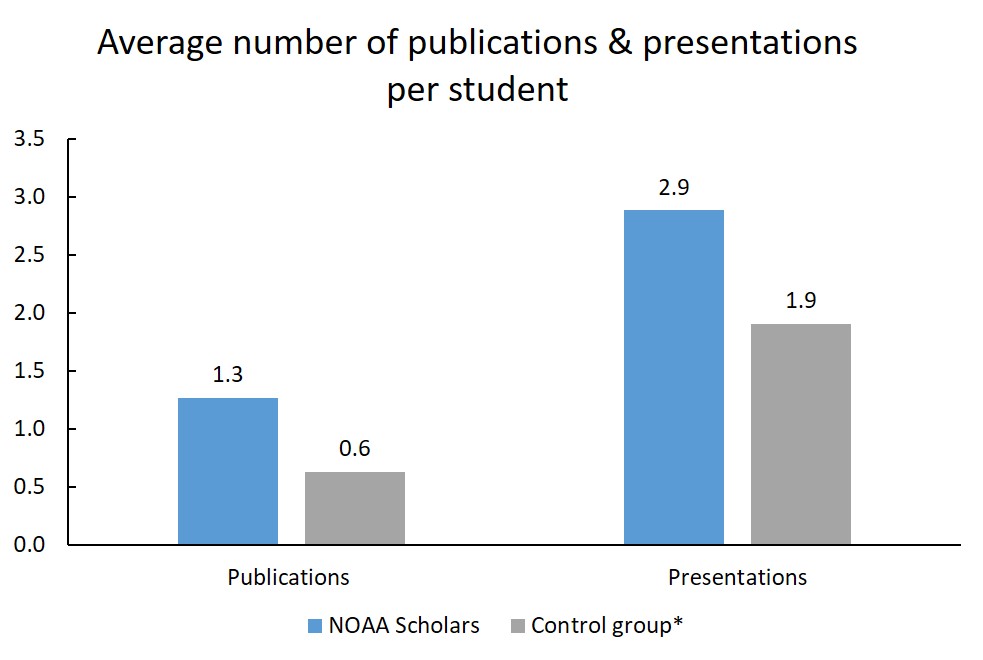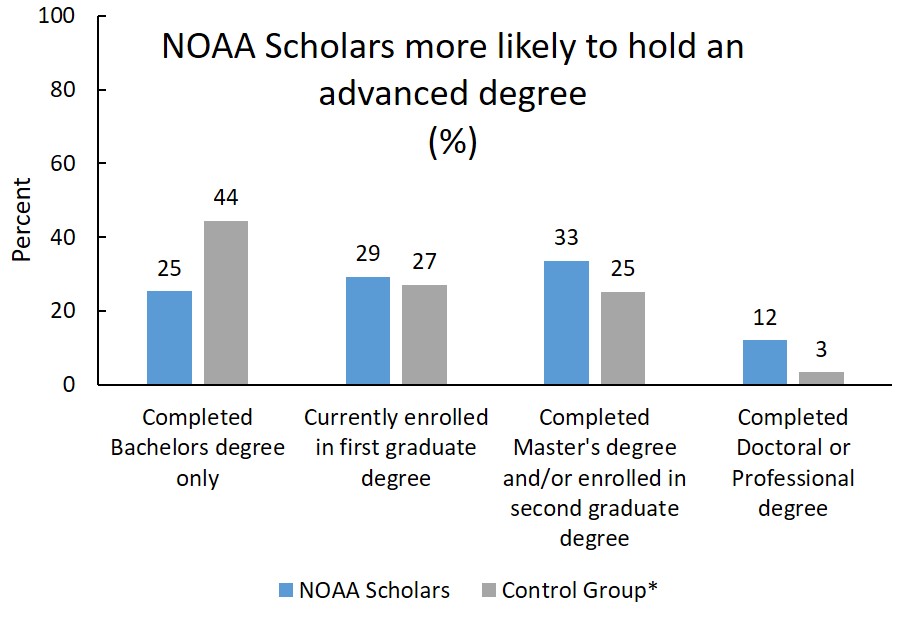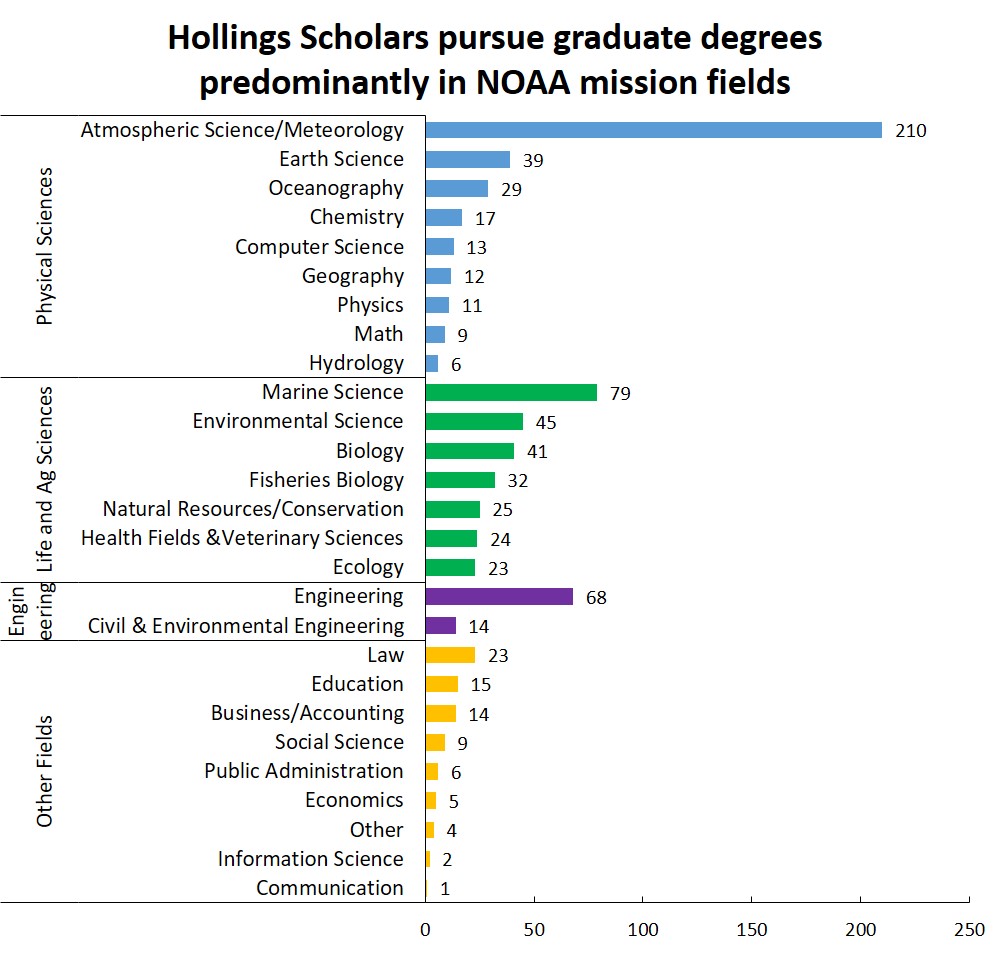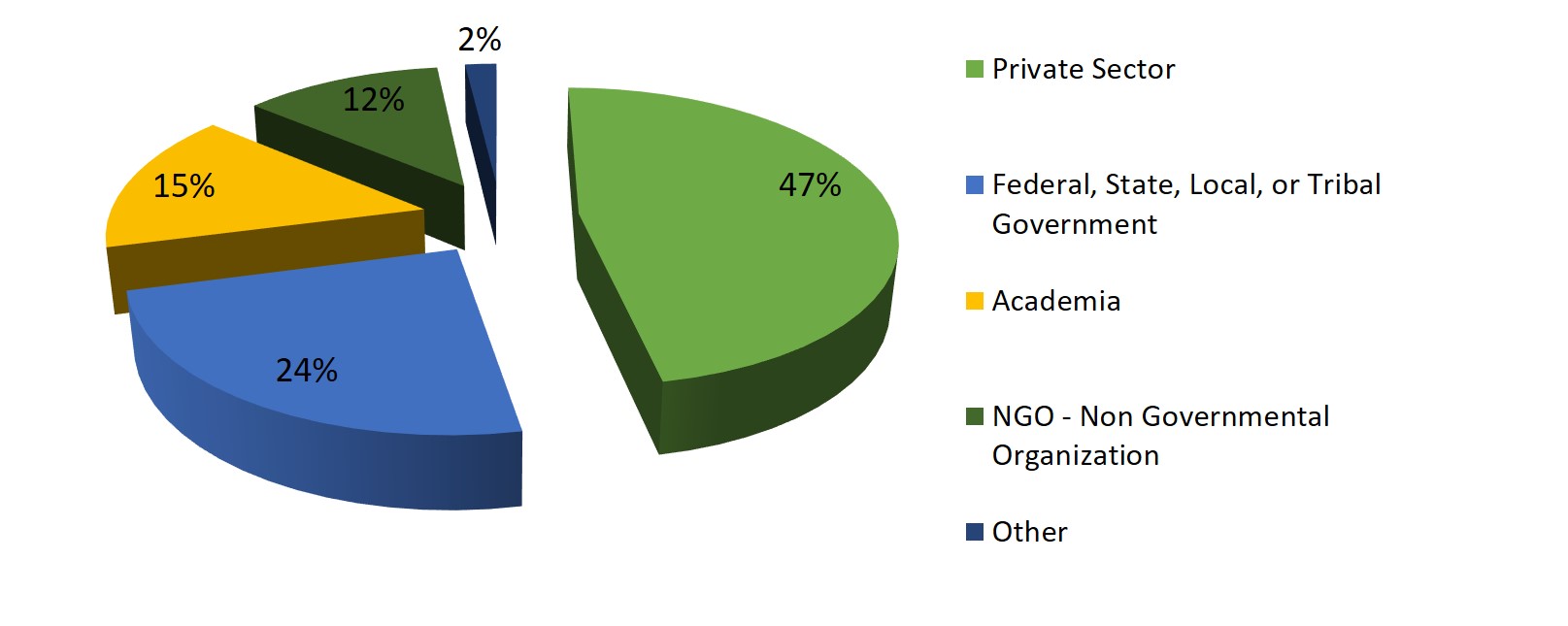Hollings Scholarship by the Numbers
1.) NOAA Scholars are significantly more likely to co-author peer reviewed publications and give professional presentations than non-recipients.
Many scholars publish papers with their NOAA mentor based on their summer internship research. Both NOAA Hollings and Educational Partnership Program with Minority Serving Institutions undergraduate scholarships include funding for students to present their research at up to two scientific conferences. Publishing peer-reviewed articles and presenting at scientific conferences helps students share their research with experts in their field, connect with potential graduate school advisors and employers, and be more competitive when applying for graduate programs and jobs.

2.) Approximately 75% of NOAA scholarship alumni pursue a graduate degree, and 45% of alumni have earned at least one graduate degree since completing the program.
NOAA scholars were statistically more likely to hold an advanced degree when compared with the control group*. Many alumni receive prestigious fellowships to support their graduate study, including more than 120 NOAA scholarship alumni who have been awarded National Science Foundation Graduate Research Fellowships. Four times as many NOAA scholars have completed doctoral or professional degrees compared with non-recipients.

3.) More than 85% of the Hollings alumni that continue on to graduate school pursue advanced degrees in NOAA-related STEM fields.
The most frequently pursued graduate degrees include: atmospheric science (26%), marine science (10%), engineering (8%), biology (6%), and geology & earth sciences (5.5%).

4.) Nearly half of NOAA scholarship alumni currently in the workforce are working in the private sector.
Hollings alumni successfully compete for postdocs, jobs at NOAA, other government agencies, private industry, academia and non-governmental organizations. The positions most frequently held by NOAA Hollings alumni include: meteorologists, postdoctoral researchers, research assistants, software engineers and science teachers. Hollings has a growing network of alumni who are working at many STEM organizations, both private and public sector. NOAA undergraduate scholars develop transferable skills that set them up for success in any sector.


